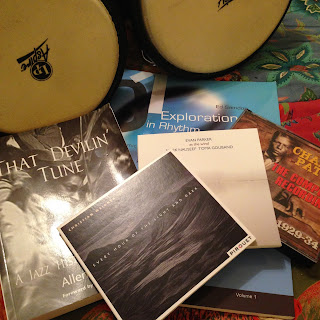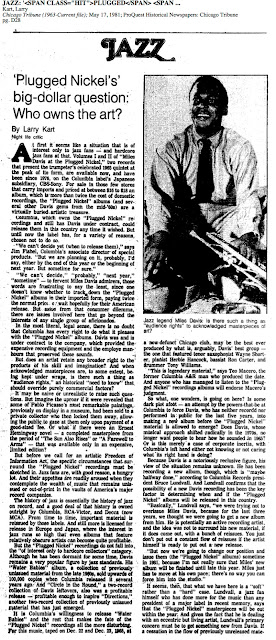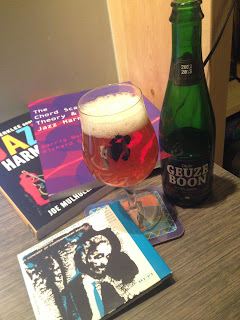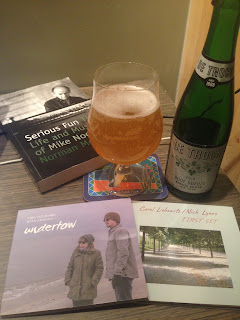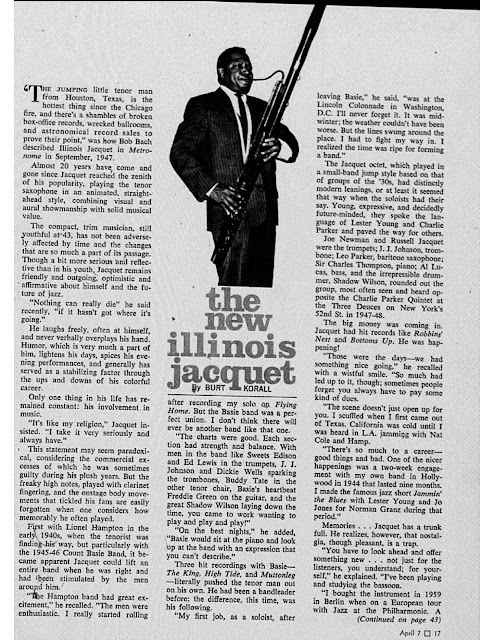 JuJu and Speak No Evil got some heavy rotation in the early 2000s and I have returned to them on fairly regular intervals over the years. My knowledge of Night Dreamer, The Soothsayer, The All Seeing Eye, Adam's Apple and Schizophrenia came from listening sessions at the public and university library (along the way I must have missed Etcetera). Spending more time with them this year has been time well spent.
JuJu and Speak No Evil got some heavy rotation in the early 2000s and I have returned to them on fairly regular intervals over the years. My knowledge of Night Dreamer, The Soothsayer, The All Seeing Eye, Adam's Apple and Schizophrenia came from listening sessions at the public and university library (along the way I must have missed Etcetera). Spending more time with them this year has been time well spent. I was surprised by how many of the tunes from Night Dreamer seemed familiar to me. Either I must have listened to that album more than I realized or perhaps in the years following I've heard others playing songs like "Black Nile," "Virgo" and the title track. Or maybe the stickability of the tunes is testament to Shorter's ability as a composer. Of these, I was least familiar with The All Seeing Eye. It's an interesting work and I can think of a couple of friends who may enjoy the writing for five or six horns and rhythm (a line-up I don't really associate with Blue Note or music of this era). I remember thinking to myself, "I thought the pianist was Herbie?," then double checking the liner notes and being pleasantly surprised as I couldn't recall him playing like he does on "Chaos."
While I know some people who don't really care for Shorter's tone, I find it quite appealing (although I do prefer his Shorter's more recent soprano tone to his early years on the straight horn). There is something about his tonal inflections that remind me of the way Warne Marsh colored individual notes and I think this contributed to my initial attraction to his playing. In fact, this may even be my favorite element of his playing.
Purchasing this set was an in-the-moment decision and the motivating factor was the last three albums - Super Nova, Moto Grosso Fein and Odyssey of Iska. First, because they are early examples of his soprano work and, secondly, because when people speak of Shorter's Blue Note era these albums don't get a mention (no doubt due to anti-fusion sentiments that are part of the jazz world) and this makes me curious. Someone leant Super Nova to me a while back and I had forgotten the dense quality and intensity of some of the tracks. He sticks solely to soprano here and I need to get around to comparing the tunes he recorded with Miles that also appear here. I had heard one track from Moto a few years back (thanks Paul) and I remember it sparked my attention but I never followed through checking out the album. Both Moto and Odyssey have a similar vibe with the music slowly unfolding. The unhurried, wandering, exploratory quality appeals to me. I don't listen to a lot of music of this ilk, so these last three albums have made a refreshing change of pace. For those after some adventurous and exploratory music or fans of early(ish) fusion, make sure you check out these albums.
All this talk and I haven't mentioned any of the sideman, and lets face it, they're not light-weights. Joe Chambers, Herbie Hancock and Ron Carter make regular appearances (on 4, 5 and 6 albums respectively), Freddie Hubbard is on form, Elvin Jones is superb (Joe Chambers also caught my ears) and James Spaulding contributed some fiery playing. Aside from a smattering of sideman appearances in the 60s, I've never really checked out his work.
This set is a reminder of just how much contemporary jazz (as soloists, accompanists, compositionally and the approach to ensemble playing) owes to the music from this era. I'm looking for to delving into more from Shorter when I tackle the Plugged Nickel box set in the new year.


